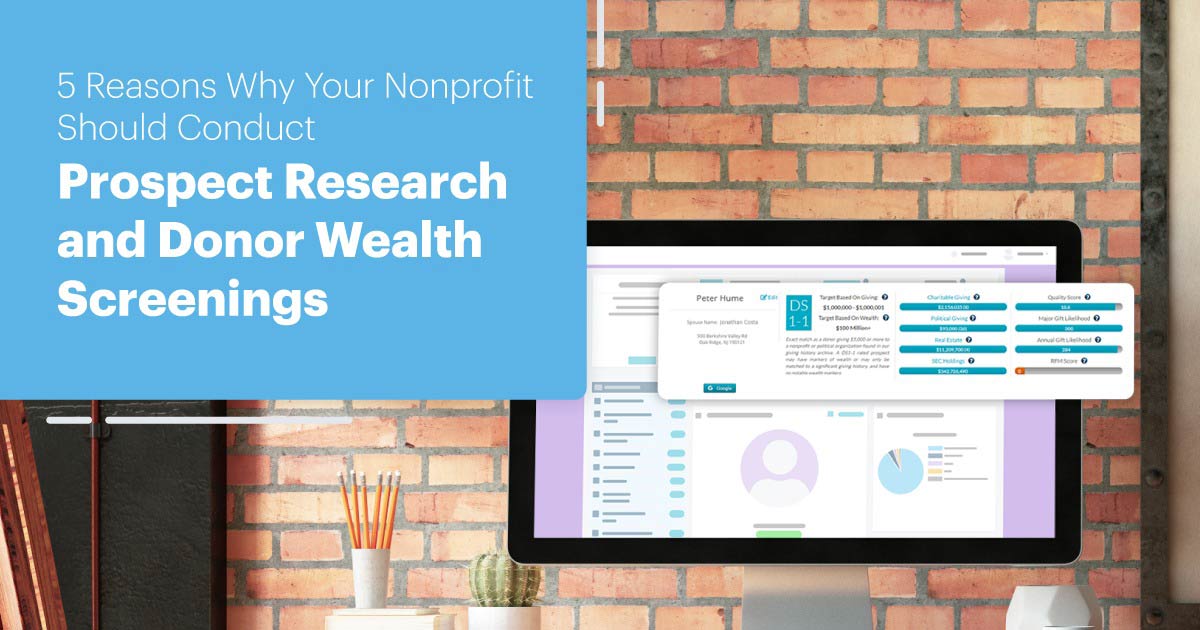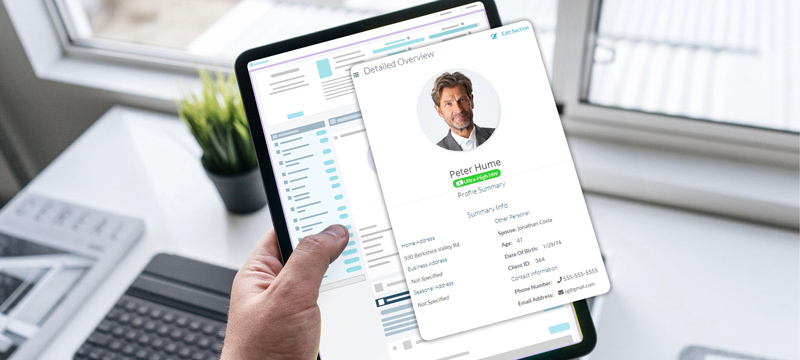Nonprofit Technology & Fundraising Blog
Subscribe to our mailing list
March 11, 2021 |

This post is contributed by DonorSearch.
Getting in front of the right prospects, asking for the right amount, and presenting a purpose that brings in a gift takes one thing: prospect research. Research will tell you a prospect’s financial capacity, the causes they’re giving to, and if the timing is right for an ask in light of their circumstances.
Oh, and there’s one more factor in getting the gift: someone who’ll use the research to come up with a plan and actually make the ask.
This is where you may run into resistance. You present those fundraisers and key volunteers like board members with great prospect research and they raise objections about things like ethics, privacy, reliability, etc. You may also have trouble getting that great information in the first place, especially if you want to get it quickly and efficiently through the purchase of a screening.
How do you persuade them that they MUST have prospect research and a wealth screening to get the big gifts? Have the answers to these 6 common objections:
Your Response: Prospect research gathers publicly available information.
Your Response: All the information we gather is kept confidential. The data we share with our screening data vendor is kept behind a login. What’s more, the vendor is legally obligated not to share our prospect information with any of their other customers.
Your Response: A good batch screening delivers the information we need to decide on which prospects have the greatest giving potential so we know who to ask first, how much and what to ask for–all at once. We’re saving time and effort because we have a clear path to results.
Your Response: A good batch screening vendor has strict matching logic and a quality score that quickly shows you what you can use right away, and what you may want to confirm on your own — So no false positives.
Your Response: A good batch screening vendor will give you the tools to sort, filter and segment your prospect list, along with guidance on the key markers to look for, so it’s quick work to come up with an action-ready list of great prospects.
Your Response: From our prospect research, we learned about their wealth and calculated the ask; we also learned that they’re giving substantially to a cause just like ours, so we know they’ll be inspired by the purpose. They’re likely going to listen and say YES.

With the objections out of the way, you may STILL have to show the benefits of prospect research.
Donors give to people. They will respond to a person who shows they understand where they’re coming from. Prospect research uncovers the information that gives you a clear picture of what they care about.
Donors give what they can. If you ask for an amount you know they can afford, you won’t leave money on the table–and your cause will receive maximum benefit.
If prospect researchers look for the six markers of philanthropy in their research, the high-capacity/high-inclination prospects bubble up to the top of the list–ready for engagement.
Research can identify where a prospect is already giving or serving, which tells you what causes speak to their passions. If you have a similar mission, you’ll likely get a positive response.
A prospect’s professional and personal relationships can influence a prospect to say yes to an ask.
You probably already know who your major donors are. You see it in their giving record in your database. But is there more to know? Most likely. How do you know who they are? And how do you engage them in the age of social distancing?
Follow us on social!